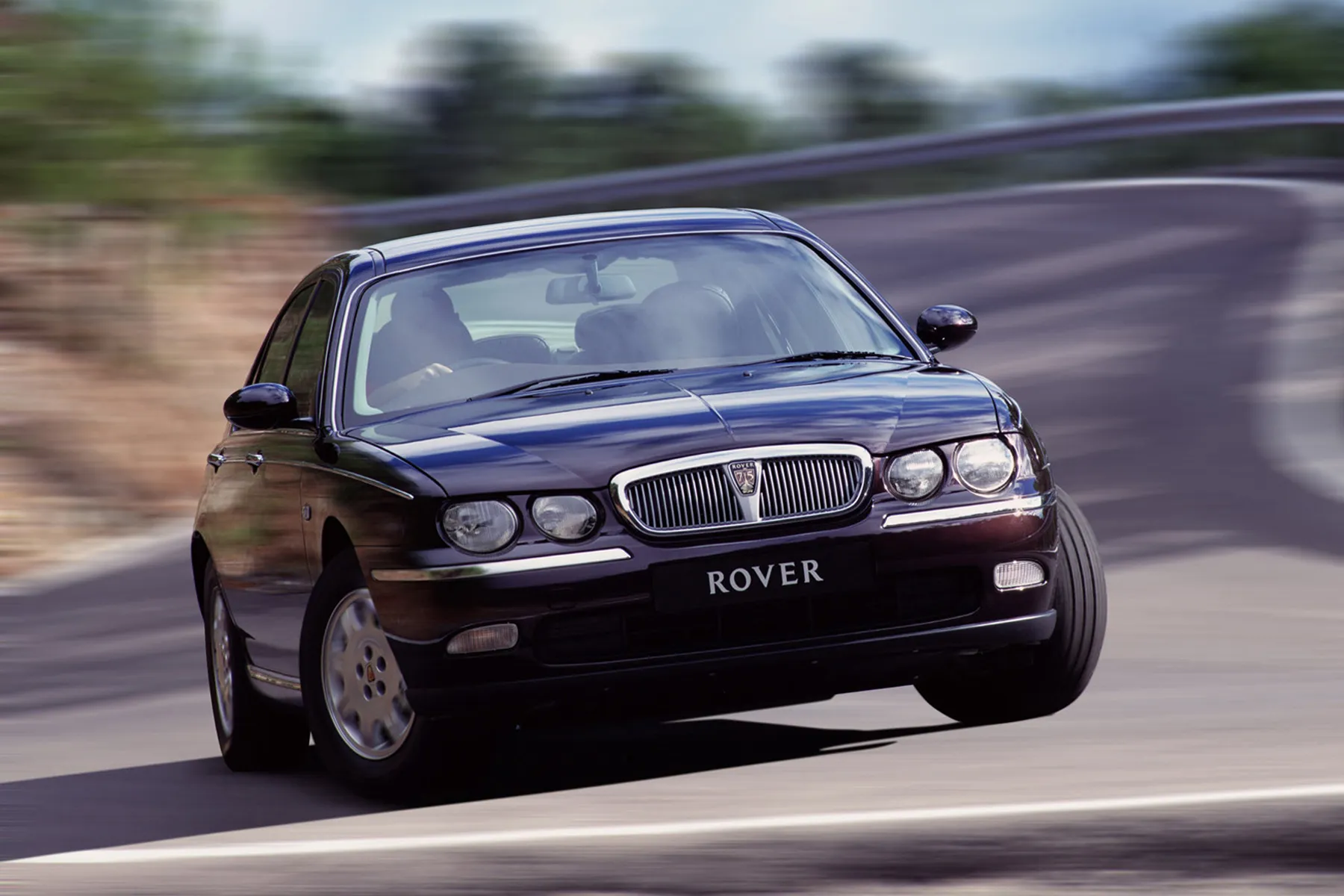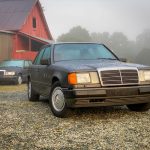Few car lineages sum up the best of a car company quite like Rover’s P Series – a taste of luxury for the man and woman on the street; refined and certainly not vulgar. It was the luxury car for the everyman.
Until the P range was replaced with the SD1, it represented the peak of the Rover range and, right now, they offer a magnificent mixture of classy transport without the large-scale running costs of Jaguar, Bentley, and Rolls-Royce. Rover also used the P series to innovate, with construction techniques, the Buick-sourced V8 that became the ‘Rover’ V8, and by inventing a new market segment with the P6.

However, which P-model is the right one for you? From stately executive cars to sports saloons, there’s a P model for everyone.
P1 (1933–38)

The P1 marked a key move for the Rover brand – the decision was taken to position the brand upmarket with its new model, the 10. The chassis was made available to several coachbuilders, with power coming from a 1.4-litre four-cylinder engine mounted flexibly in the chassis to avoid excess vibration. Today, values for the P1 saloon range from £3600 to £11,000, with coupes and open tourers roughly 60 per cent more across the board.
P2 (1937–48)

Otherwise known as the Rover 16, the P2 was a more streamlined Rover 10 and 12, and it featured a 2.1-litre straight-six. Body styles included saloon, sports saloon, and the drophead coupé, and later models featured a 1.9-litre model called the 14 and a 2.5-litre model called the 20.
P3 (1948–49)

The P3 – otherwise known as the Sixty and Seventy-Five – showcased Rover’s new engine family, which had been in development since before the war. Available in either 1.6-litre four-cylinder form or 2.1-litre six-cylinder configuration, it featured an overhead inlet and side exhaust valves, mated to a gearbox from the car’s predecessors, the 12 and 16.
Though the P3 looked similar to these predecessors, most of the body apart from the wings and bonnet were new, with the car half an inch wider.
Available in two body styles – 6-light saloon and 4-light sports saloon – the P3 featured independent front suspension in a box-section chassis. Early manufacturing issues and material shortages meant just 9100 were built in the year of production.
P4 (1949–64)

The P4 family began life in 1949 with the 75, carrying over the straight-six engine from the P3 but now with chromium-plated cylinder bores, an aluminium cylinder head with built-in induction manifold, and a brace of horizontal carburettors. However, it was the styling that was a key discussion point – derived from the 1957 Studebaker, it was a complete change of direction from the prewar style of the P3, with a streamlined body and chromium grille, plus recessed headlamps. Road & Track magazine even said that, Rolls-Royce apart, that there was “no finer car built in the world.”
In 1953, Rover broadened the range with the four-cylinder 60 model, plus the 2.6-litre 90 model, and in 1954, the 75’s engine was increased to 2.2 litres, around the same time as a major David Bache–penned facelift.
In 1956, the 105R and 105S joined the range, with a high-compression version of the 90’s 2.6-litre straight-six. Improvements in the quality of fuel meant that the twin SU carburettor–fed engine could develop 108bhp. The 105R featured a British-built automatic gearbox called the Roverdrive, at a time when most manufacturers bought in American-made self-shifters. The 105S, meanwhile, used a manual transmission and Laycock de Normanville overdrive, with a kick-down control.
With the launch of the P5 in 1958, the P4 range was simplified to a new 2.3-litre four-cylinder 80 model and the 2.6-litre 100 model. The latter was far more popular, outselling the four-pot by more than three to one.
For the last two years of production, between 1962 and 1964, the 100 was redeveloped as the 110 with a more powerful engine courtesy of a Weslake cylinder head (123bhp), while the 95’s four-cylinder was tuned for economy (102bhp).
P5 (1958–67)

The P5 was a critical car for the development of the Rover brand. Not only was it the first model to feature unitary bodywork, it was much larger than previous Rovers. Its mixture of refined David Bache–designed lines and luxurious interior won it fans in the British government, long after it had gone off sale, and this bold step into a higher market statement allowed the P4 to be sold alongside it for some time as a lower model.
Originally sold as the 3-litre, the P5 was powered by a 3.0-litre development of the P4’s six-cylinder engine. It produced 115bhp which, when combined with the 1587kg kerbweight, meant the Girling brake drums weren’t quite enough. Disc brakes were fitted in 1959, with automatic transmission and power steering among the initial options that later became standard fitment.
The Mark II model entered the fray in 1962, with more power from the 3.0-litre straight-six (129bhp), and the option of a coupé body style that retained four doors, but this was outsold three to one.
In 1965, Rover launched the MkIII model, which saw power grow to 134bhp, and in the back seat the rear bench was replaced with two individual seats.
P6 (1963–67)

The P6 was a canny piece of marketing manoeuvring from Rover, as it had spotted a gap in the market between 1.5-litre cars and big 3.0-litre cars. Moreover, there was a new type of buyer – younger, affluent, and on the move socially, personally, and professionally. The idea was to offer more luxury, but with the sporty dynamics of a Jaguar Mk2 but a much lower cost. As such it was technically novel for the time, with de Dion rear suspension, four-wheel disc brakes, and a fully synchromesh transmission, with Citroën DS–inspired non-stressed body panels bolted to a unit frame.
First launched with a 2.0-litre four-cylinder designed specifically for it, the 2000 model produced 104bhp. In 1966, the 2000 TC was launched with twin SU carburettors, which boosted power to 110bhp. Two years later, Rover fitted the Buick V8 (after significant under-bonnet reorganisation) to create the 3500. This potent engine offered the potential of 9.5 seconds to 60mph and a top speed of 117mph – heady stuff for the later 1960s.
The Series II model was launched in 1970 with new exterior trim, plus new instruments inside on the 3500 and 2000TC. In 1973, the 2200 was launched to meet stricter exhaust regulations, particularly in California. Capacity was up to 2.2 litres to increase torque and minimise power losses.
In 1971, the 3500S model arrived, denoting a four-speed manual synchromesh model, which was much quicker than the automatic car, with 0–60mph dropping down to nine seconds.
P5B (1967–73)

The last of the P5 line received the B due to the presence of the Buick-derived Rover V8 engine, which was also used in the 3500. Badged as the 3.5 Litre, it produced a hefty 158hp and a thumping 210lbft of torque. Despite two extra cylinders, the V8 was lighter than the outgoing six-cylinder, which made for better fuel economy. It featured a BorgWarner Type 35 automatic gearbox, variable-ratio power steering, and Lucas fog lights. It soon became popular among high-ranking politicians, business types and even royalty.









